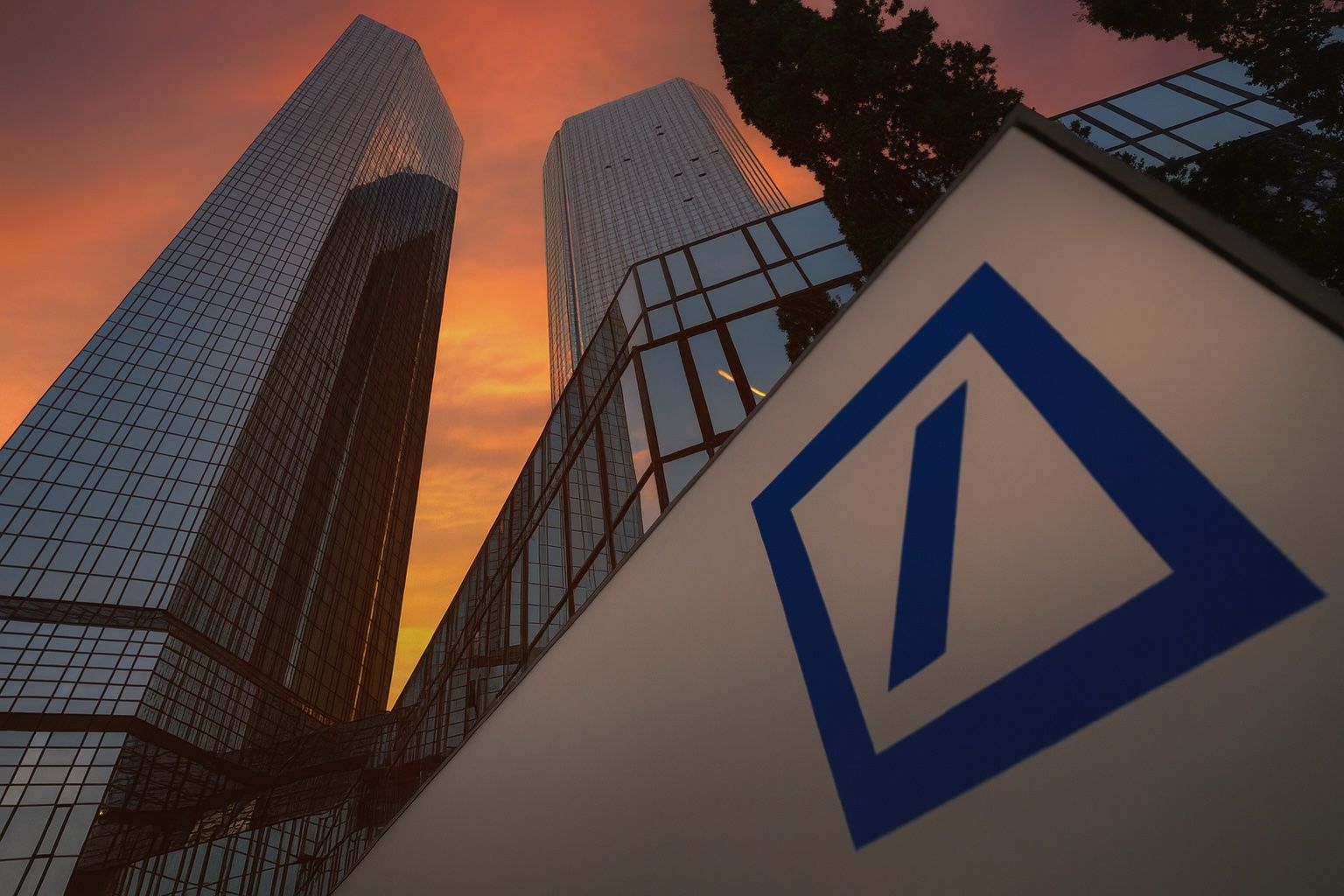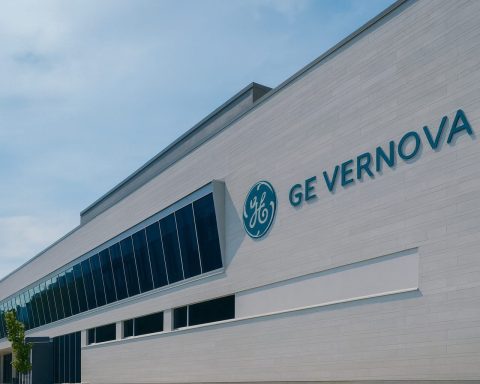FRANKFURT/LONDON — November 17, 2025.
Deutsche Bank has kicked off a new phase of its turnaround, telling investors it aims to deliver a return on tangible equity (RoTE) of more than 13% by 2028, grow revenues to about €37bn and lift shareholder payouts to 60% of net profit — while hiring up to 250 additional wealth managers to accelerate growth. [1]
The strategy update, unveiled at the bank’s Investor Deep Dive 2025 in London, marks the most ambitious set of financial targets since Christian Sewing took over as chief executive in 2018 and vowed to stabilise a lender hit by years of losses and scandals. [2]
Yet despite stronger profit guidance and richer payouts, Deutsche Bank’s shares in Frankfurt slipped more than 3% to around €30.8 on the day, underscoring lingering investor scepticism about whether Europe’s largest listed lender by assets can consistently match Wall Street rivals. [3]
From Turnaround Story to “European Champion”
Sewing told investors the group is now shifting “from defence to offence”, arguing that the heavy lifting of restructuring, risk clean‑up and capital rebuilding is largely done. [4]
The bank’s new medium‑term vision is to become a “European champion in banking”, with leading positions across core corporate, investment, private and asset‑management franchises, supported by a stronger balance sheet and greater use of artificial intelligence. [5]
The pitch comes after a run of improved results:
- Profit before tax for the first nine months of 2025 reached €7.7bn, up 64% year on year (36% excluding legacy litigation items).
- RoTE over the same period was 10.9%, already at the bank’s 2025 target of above 10%. [6]
- Deutsche Bank says it expects full‑year 2025 revenues of about €32bn, non‑interest expenses around €20.6bn and profit before tax of roughly €10bn, confirming that it is on track to hit its 2025 goals. [7]
That progress has allowed management to pivot away from pure repair work and towards what Sewing describes as “scaling the Global Hausbank” — leveraging Germany as a home market while acting as a gateway to Europe for clients worldwide. [8]
New 2028 Targets: Growth, Efficiency and Payouts
At the heart of the Investor Day is a fresh set of objectives for the period 2026–2028:
- RoTE above 13% by 2028, compared with a goal of more than 10% for 2025. [9]
- Revenue compound annual growth rate (CAGR) above 5%, taking group revenues from roughly €32bn in 2025 to around €37bn by 2028. [10]
- Cost‑income ratio below 60% in 2028, versus a 2025 target of under 65%, helped by about €2bn of gross cost efficiencies from automation, platform scaling and organisational streamlining. [11]
- Common Equity Tier 1 (CET1) capital ratio to remain within a 13.5–14% operating range, broadly unchanged from today, preserving a sizeable buffer above regulatory requirements. [12]
- Shareholder payout ratio increased to 60% of net profit from 2026, up from a 50% target for 2025, with scope for further buybacks or special distributions if CET1 sits sustainably above 14%. [13]
Management expects roughly €5bn of incremental revenues by 2028 versus 2025, with about €2bn of that uplift coming from Germany alone as fiscal stimulus, private investment and structural reforms feed through. [14]
CFO designate Raja Akram framed the plan as a move to “accelerated growth” underpinned by disciplined capital allocation and a more scalable operating model, promising that revenues should grow faster than costs through 2028. [15]
Wealth Management Hiring Spree to Drive Asset Gathering
One of the clearest growth bets is in wealth management. According to Bloomberg, Deutsche Bank plans to recruit up to 250 additional private bankers and relationship managers to strengthen its franchise in its home market and major European wealth hubs such as Italy and the UK, as part of a broader push to increase assets under management and fee income. [16]
This hiring wave is designed to plug into the Global Hausbank strategy:
- The bank wants to be the primary financial partner for affluent individuals, entrepreneurs and family offices, offering lending, investment solutions and succession planning under one roof.
- Wealth management sits alongside asset management and payments as a key “asset‑gathering” engine across the group, highlighted repeatedly in the Investor Day material. [17]
The emphasis on stable, fee‑driven businesses reflects lessons from past cycles, when Deutsche Bank’s earnings were dominated by more volatile trading income. Management argues that a larger, stickier wealth franchise should smooth profits and support higher valuation multiples over time. [18]
Investment Bank: Higher‑Margin Growth, Less Incremental Cost
Despite efforts to diversify, Deutsche Bank’s investment bank remains central to the story — and a source of debate among investors who worry about cyclicality and capital intensity. Reuters notes that some shareholders still see the group as overly reliant on its global investment banking arm, even as the retail division lags peers. [19]
Management’s message at Investor Day: growth from here should be more capital‑ and cost‑efficient. Presentations on the investment bank highlight a “world‑class” fixed‑income and currencies (FIC) franchise and a repositioned advisory and capital markets business, with an explicit focus on balance‑sheet‑light activities. [20]
Executives also stressed that new technology and process automation will allow incremental revenues to flow through at much higher margins than in previous expansion phases. Specialist news site eFinancialCareers captured the point with a headline saying that marginal revenues in the investment bank are expected to come at roughly half the additional cost seen in the past. [21]
If Deutsche Bank can deliver that degree of operating leverage, it will go a long way towards hitting the sub‑60% cost‑income ratio target without another round of painful headcount cuts. [22]
Sustainable and Transition Finance: €900bn Target by 2030
Alongside financial metrics, Deutsche Bank used the day to update its sustainability roadmap.
In a separate media release, the bank announced a new cumulative sustainable and transition finance target of €900bn between 2020 and the end of 2030, excluding volumes from asset‑management subsidiary DWS. Around €440bn had already been achieved by the end of the third quarter of 2025. [23]
Key elements of the refreshed sustainability plan include:
- Launch of an initial Transition Finance Framework, effective from 1 January 2026, which sets criteria for financing decarbonisation in hard‑to‑abate sectors via activity‑based, entity‑level and sustainability‑linked structures. [24]
- A clearer distinction between “sustainable finance” — such as pure‑play renewables and social projects — and “transition finance”, which supports credible net‑zero pathways for higher‑emitting clients. [25]
- A nature‑focused ambition to facilitate 300 transactions by 2027 that contribute to biodiversity and ecosystem restoration, aligned with UN Sustainable Development Goals and the Kunming‑Montreal Global Biodiversity Framework. [26]
The bank also highlighted partnerships announced around COP30 in Brazil, including work with Honduras, Suriname and several major corporates on new rainforest‑protection asset classes — signalling an intention to be active in emerging nature‑finance markets. [27]
DWS Confirms 2025 Forecasts and Double‑Digit EPS Growth Ambition
Deutsche Bank’s majority‑owned asset manager DWS used the Investor Deep Dive to reiterate its own medium‑term goals.
In a media release, DWS said it now expects for full‑year 2025:
- Revenues of €3.1bn
- Costs of €1.8bn
- Pre‑tax profit of €1.3bn
This would be consistent with previously communicated targets, including earnings per share of €4.50 and a reported cost‑income ratio below 61.5%. [28]
Looking further ahead, DWS maintained its ambition for 10% annual EPS growth in 2026 and 2027, building on total assets under management of about €1.05tn as of the end of September 2025. [29]
For Deutsche Bank shareholders, DWS is an important part of the equity story: it contributes fee income, helps diversify away from trading volatility and, if re‑rated, could unlock additional value given the bank’s majority stake. [30]
How Investors and Analysts Are Reacting
Despite the bolder targets, markets reacted cautiously. By the close of trade in Frankfurt, Deutsche Bank’s Xetra‑listed shares were down just over 3%, underperforming the wider DAX index. [31]
German financial portal FinanzNachrichten, citing Euro am Sonntag, noted that while higher earnings and cost savings should boost returns, the share price “initially cannot benefit”, echoing the view that execution risk remains. [32]
Analyst responses were mixed but generally constructive:
- JPMorgan kept an Overweight rating and a price target of €38.40, suggesting the new mid‑term goals support a positive view on the stock.
- RBC reiterated an Outperform call with a €39 target.
- Jefferies stayed more cautious, maintaining Hold with a €33 target and warning that delivery against the plan will be crucial. [33]
On U.S. markets, the bank’s New York‑listed shares traded around $35–36, also slightly lower on the day.
Key Risks — and What to Watch Next
Even supporters concede that Deutsche Bank’s path to becoming a true “European champion” is not risk‑free. External headwinds flagged by management and regulators include:
- Slowing growth in Germany and the eurozone
- Rising credit risks after a long period of low defaults
- Geopolitical tensions and trade disruptions
- Rapid advances in AI, which create both competitive opportunities and operational risks for banks. [34]
Over the next 12–24 months, investors will be watching several milestones:
- Full‑year 2025 results, scheduled for late January 2026, which should confirm whether the bank has fully met its current RoTE, cost and capital targets. [35]
- The pace of hiring and net new money in wealth management and asset management, given the focus on asset gathering. [36]
- Evidence that incremental revenues in the investment bank are indeed coming through at significantly better cost ratios. [37]
- Progress towards the €900bn sustainable and transition finance goal, including how much of the pipeline qualifies under the new Transition Finance Framework. [38]
For now, Deutsche Bank has laid down a clear marker: higher returns, faster growth, bigger shareholder payouts — and a bid to claim the title of Europe’s banking champion by 2028. Whether investors fully buy into that vision will depend less on today’s promises and more on what shows up in the next few years of earnings reports.
References
1. www.db.com, 2. www.reuters.com, 3. www.google.com, 4. www.reuters.com, 5. www.db.com, 6. www.db.com, 7. www.db.com, 8. www.db.com, 9. www.db.com, 10. www.db.com, 11. www.db.com, 12. www.db.com, 13. www.db.com, 14. www.db.com, 15. www.db.com, 16. www.bloomberg.com, 17. www.db.com, 18. www.reuters.com, 19. www.reuters.com, 20. investor-relations.db.com, 21. www.efinancialcareers.com, 22. www.db.com, 23. www.db.com, 24. www.db.com, 25. www.db.com, 26. www.db.com, 27. www.db.com, 28. www.dws.com, 29. www.dws.com, 30. www.db.com, 31. www.google.com, 32. www.finanznachrichten.de, 33. www.finanznachrichten.de, 34. www.reuters.com, 35. investor-relations.db.com, 36. www.bloomberg.com, 37. investor-relations.db.com, 38. www.db.com










